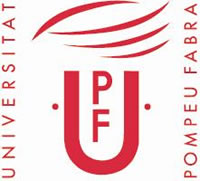Resum
Les selenoproteïnes són proteïnes que incorporen en la seva seqüència l'aminoàcid selenocisteïna (U), el qual es troba codificat pel codó UGA. L'estudi d'aquest tipus de proteïnes presenta certes complicacions ja que els programes informàtics solen interpretar la presència d'aquest codó com una senyal de STOP de traducció, és a dir, que en molts dels genomes seqüenciats no s’ha tingut en compte la presència d’aquest residu i és doncs possible que no estiguin ben anotats. A més a més, en els últims anys, el nombre de genomes seqüenciats ha augmentat de manera exponencial i són encara molts els que no han estat estudiats. D’aquesta manera, no se sap si aquests genomes contenen realment alguna selenoproteïna, i si és així, de quina família és aquesta. El principal objectiu del projecte és cercar dues famílies de selenoproteïnes, SelQ i EhSEP2, en una sèrie d’organismes protists seqüenciats aquest any. Per a la realització d'aquest projecte, s’han utilitzat diferents eines informàtiques (tBLASTn, Exonerate, Genewise, etc.) amb la finalitat de poder comparar les famílies de selenoproteïnes conegudes que es troben en diverses bases de dades (SelenoDB, NCBI, Ensembl) i poder localitzar possibles gens candidats en el genoma dels protists que codifiquin per algunes d'aquestes selenoproteïnes. Després del nostre anàlisi exhaustiu de les dues famílies de selenoproteïnes, només hem trobat la família EhSEP2 en un dels protists a més a més d’un gran nombre d’homòlegs en cisteïna. L’altre família, SelQ, de moment només està present en el protist on va ser identificada.
